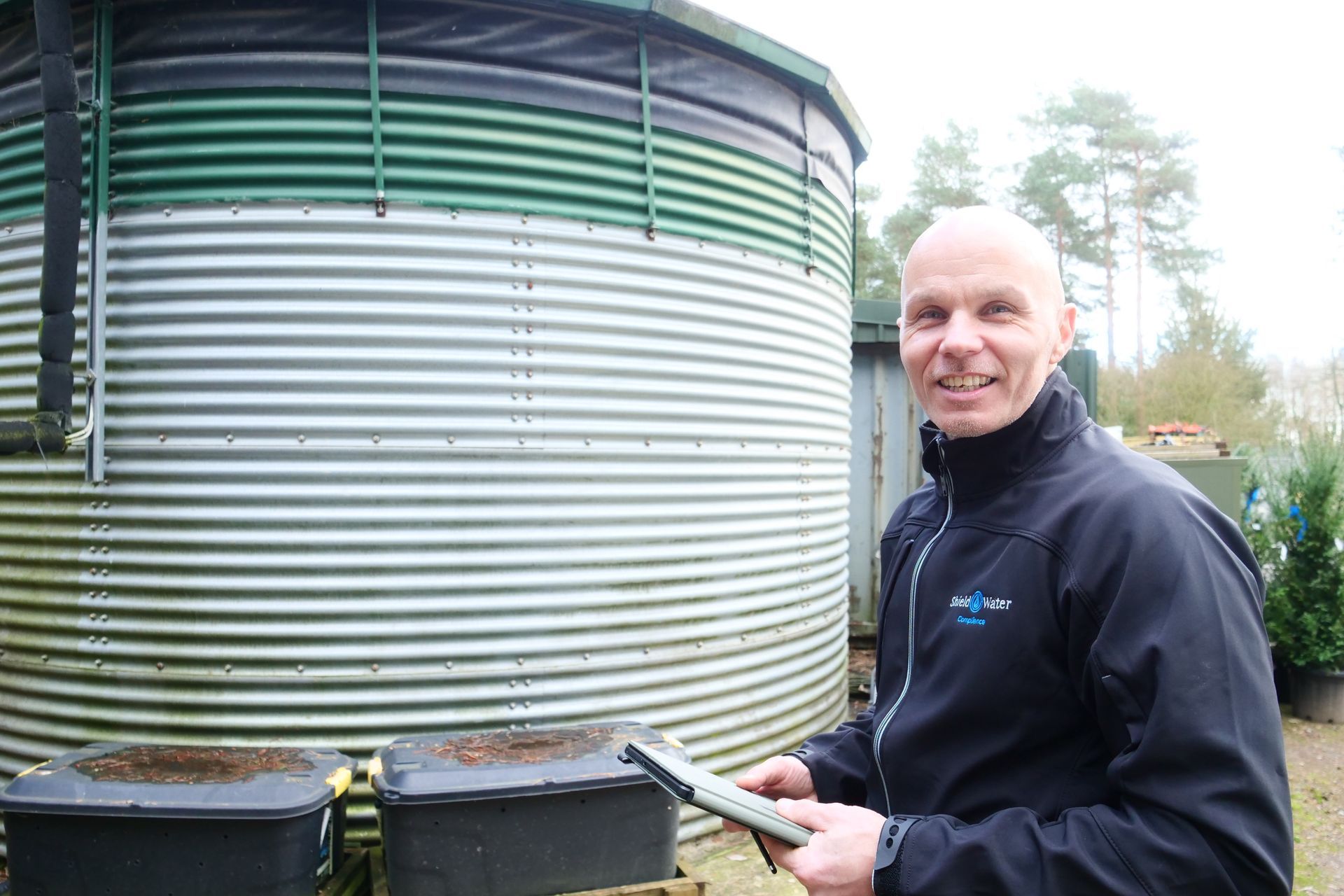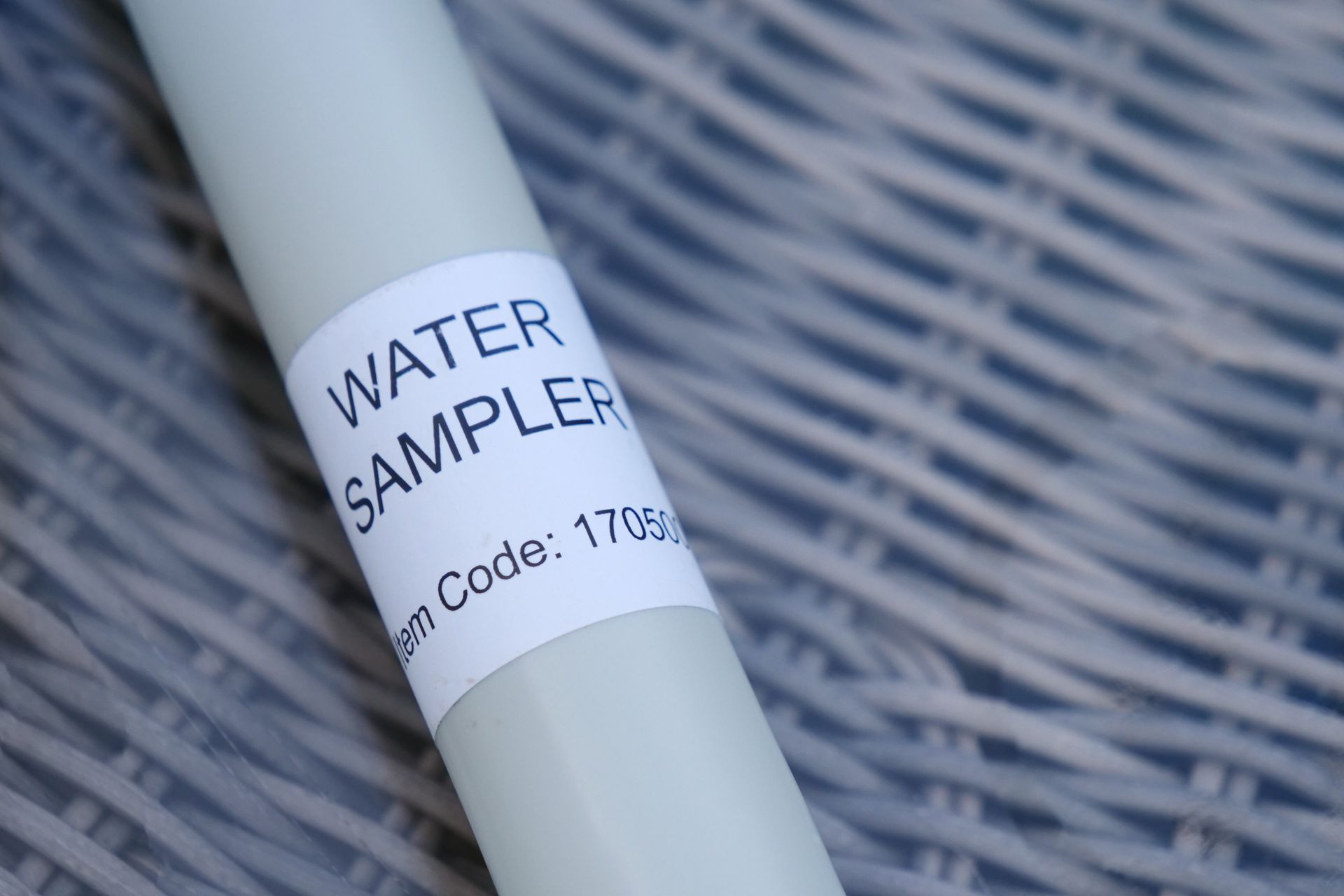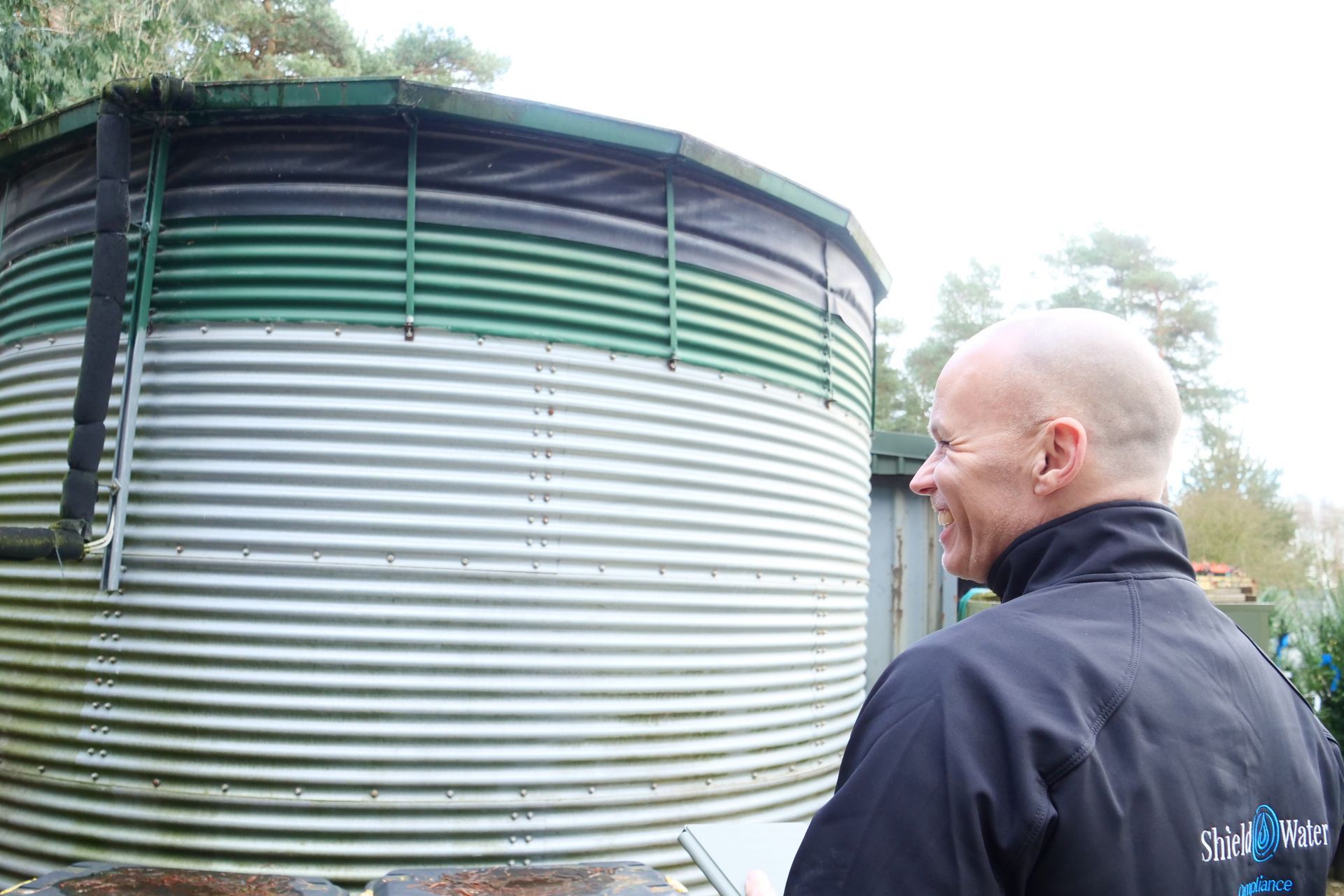The Complete Guide to Legionella Risk Assessment for Property Managers

Water safety shouldn't keep you up at night.
Yet for property managers across Britain, legionella compliance often feels like navigating a maze blindfolded. Most professionals overcomplicate this critical process.
Let me show you a better way.
After 19 years in water safety, I've seen the same mistakes repeated. Property managers either do too little (risking safety) or waste resources doing too much.
The truth? Effective legionella risk assessment follows clear principles that anyone can master.
What's Really at Stake?
Legionella bacteria cause more than just paperwork headaches.
When these microscopic threats multiply in your water systems, they create genuine risks to human health. Legionnaires' disease hospitalises hundreds of Britons annually, with a concerning 3.1% fatality rate.
Want to know why this matters to you specifically?
As a property manager, you hold legal responsibility for water safety under the Health and Safety at Work Act. The HSE doesn't accept ignorance as an excuse.
Here's the thing...
Most property managers I meet are genuinely concerned about doing the right thing. They simply lack clear guidance on what "right" actually looks like.
The 5 Essential Components of Proper Legionella Assessment
1. System Mapping
Before anything else, you need to understand what you're working with.
A comprehensive legionella risk assessment begins by mapping every water system in your property.
This includes:
- Cold water storage tanks
- Hot water cylinders
- All outlets (taps, showers)
- Little-used outlets
- Cooling towers (if present)
Many assessors rush this crucial step. They miss dead legs, forgotten outlets, or redundant pipework – precisely where legionella thrives.
2. Temperature Profiling
Temperature control remains your first line of defence.
Legionella bacteria multiply rapidly between 20-45°C. Your assessment must verify that:
- Cold water stays below 20°C
- Hot water stores above 60°C
- Hot water reaches outlets at minimum 50°C
- Return loops maintain at least 55°C
I found out through testing thousands of systems that temperature failures account for over 70% of legionella risks in commercial properties.
3. Usage Patterns Analysis
Empty buildings hide dangerous secrets.
Your assessment must evaluate how water usage patterns affect risk. Stagnation in rarely-used areas creates perfect conditions for bacterial growth.
Nobody mentions this enough: holiday periods, vacant units, and seasonal businesses face heightened risks that standard assessments often miss.
4. Control Measure Evaluation
What systems protect your water?
Every effective assessment examines existing control measures:
- Cleaning schedules
- Flushing programmes
- Water treatment systems
- Monitoring protocols
The real secret is finding the gaps between what should happen and what actually happens day-to-day.
5. Documentation Review
Paper protects people.
Your assessment must verify that all required records exist and remain up-to-date:
- Previous risk assessments
- Temperature logs
- Cleaning certificates
- Training records
- Incident reports
Most compliance failures I've witnessed stem from poor documentation rather than poor practice.
Who Should Perform Your Legionella Risk Assessment?
This question creates unnecessary confusion.
The HSE doesn't mandate external assessors. They require "competent persons" with sufficient knowledge, training and experience.
Here's what matters:
- Understanding of water systems
- Knowledge of legionella control
- Familiarity with relevant guidance
- Ability to identify risks
- Independence from day-to-day operations
The best assessments combine your operational knowledge with specialist expertise.
When Assessment Becomes Action
Identifying risks means nothing without addressing them.
Your legionella risk assessment should produce a clear, prioritised action plan that:
- Addresses immediate dangers first
- Assigns specific responsibilities
- Sets realistic timeframes
- Includes verification steps
- Creates accountability
The most valuable assessments I've delivered provide practical solutions, not just problems.
Beyond the Clipboard: Modern Assessment Approaches
Traditional assessments feel outdated because they are.
Today's best practice incorporates:
- Digital temperature monitoring
- Photo documentation
- Cloud-based record keeping
- QR-coded outlet tracking
- Real-time reporting
These approaches don't just satisfy compliance – they transform water safety into a manageable, transparent process.
Why Most Assessments Fail Property Managers
After reviewing thousands of legionella assessments, patterns emerge.
Most assessments fail because they:
- Use generic templates rather than property-specific analysis
- Focus on theoretical risks rather than practical solutions
- Overwhelm with technical jargon instead of clear guidance
- Lack actionable recommendations
- Arrive weeks after the site visit
Your assessment should empower, not confuse.
Taking Control of Your Water Safety
Water compliance doesn't require binding contracts or endless expense.
The most effective property managers establish:
- Clear water safety policies
- Staff awareness training
- Regular monitoring routines
- Responsive maintenance relationships
- Expert partnerships for technical support
This balanced approach protects both people and budgets.
Next Steps for Property Managers
Water safety begins with understanding your responsibilities.
If your current legionella risk assessment is over two years old or doesn't address the components we've discussed, it's time for a review.
Start by examining your existing documentation. What's missing? What's outdated? What actions were never completed?
Then consider whether your current approach truly delivers peace of mind or merely ticks boxes.
Remember: effective water safety isn't about paperwork – it's about protecting people while protecting your business.
Want to discuss your specific property challenges? Our team provides straightforward advice without pushing unnecessary services.
Water safety shouldn't be complicated. Let's make it simple together.
Shield Water Compliance Ltd delivers expert water safety management backed by 19 years of industry experience, ensuring your systems meet all regulatory requirements without the burden of long-term contracts.
Legionella Risk Assessment FAQ
General Questions About Legionella Risk Assessments
What is a Legionella risk assessment?
A Legionella risk assessment is a systematic process to identify and assess potential sources of Legionella bacteria in water systems, evaluate the risks, and implement appropriate control measures. It's a legal requirement for employers, landlords, and those in control of premises to ensure water systems are safe from Legionella bacteria, which can cause Legionnaires' disease - a potentially fatal form of pneumonia.
Do I need a Legionella risk assessment?
Yes, if you're an employer, landlord, or someone in control of premises, you have a legal duty to assess and control the risk of exposure to Legionella bacteria. This applies to all premises with water systems where there's a reasonably foreseeable risk of exposure to Legionella bacteria, including commercial properties, rental properties, and holiday lets.
What are the legal requirements for Legionella risk assessments in the UK?
In the UK, the legal requirements for Legionella risk assessments are established under the Health and Safety at Work Act 1974 and the Control of Substances Hazardous to Health (COSHH) Regulations 2002. The Approved Code of Practice (ACOP) L8 provides detailed guidance on how to comply with these legal requirements. All employers, landlords, and those in control of premises must assess and control the risk of exposure to Legionella bacteria in their water systems.
When is a Legionella risk assessment required?
A Legionella risk assessment is required for any water system where there's a reasonably foreseeable risk of exposure to Legionella bacteria. This includes systems that:
- Have water temperatures between 20-45°C
- Create or spread breathable droplets (aerosols)
- Hot water tanks and heaters
- Contain sources of nutrients for bacterial growth (rust, sludge, scale, organic matter)
All workplaces with water systems need a risk assessment, though the complexity will vary based on the system.
Who Can Perform Legionella Risk Assessments
Who can carry out a Legionella risk assessment?
The risk assessment should be carried out by someone who is competent to do so. For most simple water systems (like those in small residential properties), landlords or property owners can often conduct the assessment themselves if they understand the risks and necessary control measures. For more complex systems, you may need to hire a specialist with appropriate knowledge and experience. You don't necessarily need to be professionally trained or accredited, but you must be competent to identify and assess the risks.
Do I need a professional to conduct a Legionella risk assessment?
For simple domestic water systems, you don't necessarily need a professional. Most landlords and property managers can assess the risk themselves if they understand what to look for. However, for more complex systems or if you don't feel confident, it's advisable to hire a specialist. For commercial properties with cooling towers, evaporative condensers, or complex water systems, professional assessment is strongly recommended.
Content and Process of Risk Assessments
What should a Legionella risk assessment include?
A comprehensive Legionella risk assessment should include:
- Identification of potential Legionella sources in the water system
- Assessment of the risk level
- Cover all remedial and management issues
- Evaluation of existing control measures
- Review of monitoring and maintenance programs
- Practical recommendations for prevention and control
- Remedial actions plan
- Management responsibilities and named competent person
- Details of training for key personnel
- Water system drawings and asset lists
- Identification of sentinel outlets (for larger systems)
For domestic properties, a simpler assessment may be sufficient.
How do I carry out a Legionella risk assessment?
To carry out a Legionella risk assessment:
- Identify all water systems in your property
- Determine if conditions exist that could promote Legionella growth (temperature between 20-45°C, water stagnation, etc.)
- Assess the risk of exposure (through aerosols/water droplets)
- Implement appropriate control measures (temperature control, regular flushing, etc.)
- Document your findings
- Review the assessment periodically or when changes occur
For domestic properties, focus on keeping hot water hot (above 50°C at outlets), cold water cold (below 20°C), and water moving regularly.
Which would be the initial line of defence used to control Legionella growth in a system?
Temperature control is the most reliable initial line of defence against Legionella growth. Keeping hot water hot (storing water at 60°C and delivering it at a minimum of 50°C) and cold water cold (below 20°C) creates conditions where Legionella bacteria cannot thrive. Additionally, ensuring regular water movement to prevent stagnation is crucial. Source
Property-Specific Requirements
Do I need a Legionella risk assessment for a residential property?
Yes, if you're a landlord renting out a residential property, you have a legal duty to assess and control the risk of Legionella. However, for most residential properties with simple domestic water systems, the risk is generally low, and a simple assessment may be sufficient. The HSE acknowledges that the risk in most residential settings is low due to regular water usage and turnover.
Is a Legionella risk assessment required for holiday lets?
Yes, Legionella risk assessments are required for holiday lets. As the owner of a holiday let, you have the same legal responsibilities as any landlord to ensure the health and safety of your guests. This includes assessing and controlling the risk of Legionella. Holiday lets may present a higher risk due to periods of vacancy when water can stagnate, so proper management is essential. In Scotland, it's now a legal requirement to have a Legionella risk assessment before applying for a short-term let property licence.
What are the Legionella risk assessment requirements for commercial property?
Commercial properties typically require more comprehensive Legionella risk assessments due to the complexity of their water systems and the number of people potentially exposed. The assessment should be thorough and may need to be conducted by a specialist. Commercial properties often have more complex water systems that may include cooling towers, evaporative condensers, hot and cold water systems, and other features that can harbor Legionella bacteria.
Maintenance and Review
How often should a Legionella risk assessment be carried out?
While there's no legally prescribed timeframe for reviewing Legionella risk assessments, it's generally recommended to review them:
- At least every two years (industry precedent)
- When there are changes to the water system
- When there are changes to the use of the building
- Ineffective control measures
- Changes in key personnel
- If there's a case of Legionnaires' disease associated with the system
- When there are changes to HSE advice or new information about Legionella risks
Annual reviews are advisable to ensure ongoing compliance and safety.
What happens if I fail to manage Legionella risks?
Failure to manage Legionella risks can have serious consequences:
- Legal liability if someone contracts Legionnaires' disease from your water system
- Potential prosecution under the Health and Safety at Work Act
- Financial penalties
- Reputational damage
- Most importantly, risk to human health and potential fatalities
If a tenant or guest contracts Legionnaires' disease from your water system, you would need to demonstrate to a court that you fulfilled your legal duty to assess and control the risks.
Is Legionella testing required as part of risk assessment?
Testing or sampling for Legionella (microbiological monitoring) is not usually required for domestic hot and cold water systems and is only needed in very specific circumstances. Temperature monitoring is a more reliable method for confirming the water system is under control. Health and safety law does not require landlords to obtain or produce a 'Legionella test certificate.' However, for more complex systems or higher-risk settings, testing may be appropriate as part of your ongoing control measures.
Record Keeping
Record Keeping and Documentation
Do I need to keep records of my Legionella risk assessment?
While landlords with fewer than 5 employees aren't legally required to record the findings of their assessment, it's advisable to keep records for your own protection. If a tenant were to contract Legionnaires' disease, you would need to demonstrate that you fulfilled your legal duty to assess and control the risks. For employers with 5 or more employees, documenting the assessment is a statutory requirement.
What documentation should I maintain for Legionella compliance?
For comprehensive Legionella compliance, maintain:
- The completed risk assessment document
- Comprehensive written scheme of control (this document is separate to the risk assessment)
- Allocation of responsibilities
- Records of any control measures implemented
- Temperature monitoring logs
- Maintenance records for water systems
- Records of cleaning and disinfection procedures
- Training records for relevant staff
- Any testing or sampling results (if applicable)
- A logbook of all water system checks and actions
These records demonstrate your ongoing commitment to controlling Legionella risks.
Special Considerations
What are the Legionella risks for properties left vacant?
Properties left vacant for extended periods face increased Legionella risks due to water stagnation. For vacant properties:
- Flush all water outlets (taps, showers, toilets) at least once a week
- Consider implementing a regular flushing regime
- For longer vacancies, consider draining the system completely
- Before re-occupation, flush the entire system thoroughly & carry out a full system disinfection to ensure water quality and safety
- Clean and disinfect shower heads and taps before use
- Inspect hot and cold water tanks to ensure the water is clean and wholesome
This is particularly important for holiday lets, student accommodation, or any property with irregular occupancy.
Are there special considerations for holiday lets regarding Legionella?
Yes, holiday lets require special attention for Legionella control:
- Implement a water management plan for periods between guests
- Regularly flush the system during vacant periods
- Ensure hot water cylinders maintain temperatures of at least 60°C
- Clean and disinfect shower heads between guests
- Provide information to guests about any water system controls they should maintain
- Consider draining the system if the property will be vacant for extended periods & recommission before re-occupancy
- In Scotland, a Legionella risk assessment is now legally required for obtaining a short-term let licence
What additional precautions are needed for properties with hot tubs, pools, or air conditioning?
Properties with these features require additional Legionella control measures:
- Hot tubs and spa pools need rigorous cleaning, disinfection, and water testing regimes
- Swimming pools require proper chemical treatment and filtration
- Air conditioning units should be regularly maintained and cleaned
- These systems create aerosols that can spread Legionella bacteria if contaminated
- Professional maintenance is strongly recommended for these features
- Specific risk assessments should address these higher-risk systems
- More frequent monitoring may be necessary
These features are popular with guests but require additional safety management by qualified technicians.
Practical Control Measures
What are the key control measures for preventing Legionella?
The most effective control measures include:
- Temperature control: keep hot water hot (60°C in storage, minimum 50°C at outlets) and cold water cold (below 20°C)
- Prevent water stagnation by regular use or flushing of outlets
- Keep water systems clean and free from sediment, scale, and biofilm
- Ensure cold water storage tanks have tight-fitting lids to prevent contamination
- Remove redundant pipework or "dead legs" where water can stagnate
- Regular cleaning and disinfection of shower heads and taps
- Setting appropriate control parameters for water systems
- Regular maintenance and inspection of water systems
What should tenants be told about Legionella risks?
Tenants should be informed about:
- Not adjusting the temperature settings of hot water systems
- The importance of regularly cleaning shower heads
- Reporting any issues with the water system promptly (e.g., if hot water isn't heating properly)
- Running taps that aren't frequently used at least once a week
- The importance of these measures in preventing Legionella growth
- Any specific control measures implemented in the property
Clear communication helps ensure that control measures are maintained throughout the tenancy.
Can I incorporate a Legionella risk assessment into a standard risk assessment?
While Legionella risk assessment can be part of a broader health and safety assessment, it requires specific attention to water systems and control measures. The assessment needs to address the particular conditions that promote Legionella growth and spread. For simple domestic systems, it may be incorporated into general property risk assessments, but ensure all the necessary elements are covered. For complex systems, a dedicated Legionella risk assessment is advisable.
Enforcement and Compliance
Are domestic properties inspected for Legionella compliance?
HSE and local authority inspectors do not proactively inspect domestic premises or ask for evidence that landlords have carried out Legionella risk assessments. However, if a tenant were to contract Legionnaires' disease from the water system in their home, the landlord may be liable to prosecution under the Health and Safety at Work Act. They would have to demonstrate to a court that they had fulfilled their legal duty.
What are the consequences of non-compliance with Legionella regulations?
Non-compliance with Legionella regulations can lead to:
- Prosecution under the Health and Safety at Work Act
- Significant financial penalties
- Civil claims if someone contracts Legionnaires' disease
- Reputational damage to your business or property
- Difficulty obtaining necessary licences (particularly for holiday lets in Scotland)
- Most seriously, potential harm to tenants, guests, or employees
The consequences are particularly severe if negligence leads to a Legionella outbreak.
Risk Assessment for Specific Water Systems
What are the Legionella risks for boiling water systems?
Boiling water systems generally present a low risk for Legionella growth because the high temperatures kill the bacteria. Legionella bacteria cannot survive at temperatures above 60°C and are killed almost instantly at 70°C. However, any associated pipework or storage that operates at lower temperatures should be assessed as part of your overall water system risk assessment. Ensure that any water storage associated with these systems is properly maintained and that the system is regularly used to prevent stagnation in connected pipework.
What are the most common sources of Legionella risk in buildings?
The most common sources of Legionella risk in buildings are:
- Cooling towers and evaporative condensers
- Hot and cold water systems, especially those with storage tanks
- Spa pools and hot tubs
- Showers and other aerosol-producing outlets
- Decorative fountains
- Humidifiers and air washers
- Emergency shower systems
- Truck and bus washes
- Rarely used outlets where water can stagnate
- Systems operating within the 20-45°C temperature range
Remember, this FAQ provides general guidance on Legionella risk assessments. For specific advice tailored to your property or situation, consult with a qualified professional or contact the Health and Safety Executive (HSE).
Fact check: This FAQ has been compiled using information from authoritative sources including the UK Health and Safety Executive ( HSE ) and industry experts. Always refer to the latest guidance from the HSE and other relevant authorities for the most up-to-date information on Legionella risk management.









